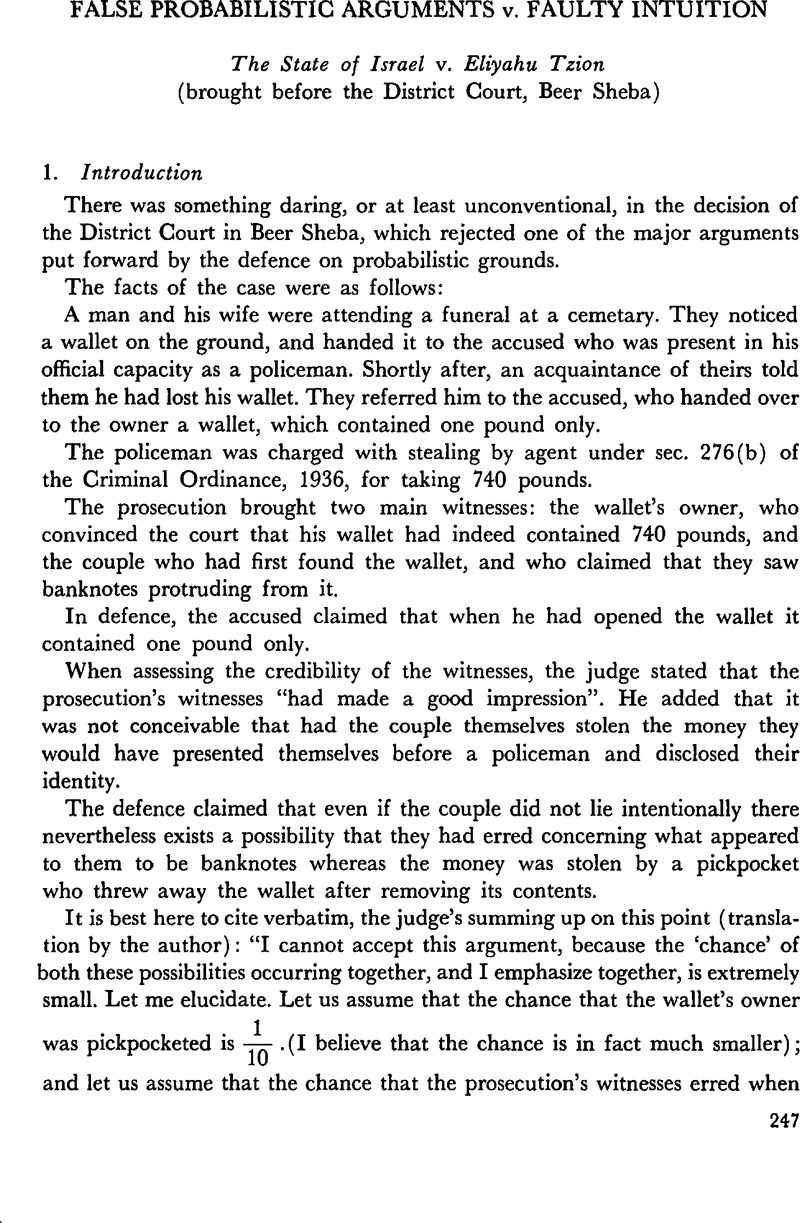Article contents
False Probabilistic Arguments v. Faulty Intuition
Published online by Cambridge University Press: 12 February 2016
Abstract

Information
- Type
- Cases
- Information
- Copyright
- Copyright © Cambridge University Press and The Faculty of Law, The Hebrew University of Jerusalem 1979
References
1 Finkelstein, and Fairley, , “A Bayesian Approach to Identification Evidence” (1970) 83 Harv. L.R. 489CrossRefGoogle Scholar; Tribe, , “Trial by Mathematics, Precision and Ritual in the Legal Process” (1971) 84 Harv. L.R. 1329CrossRefGoogle Scholar; Finkelstein, and Fairley, , Comment on “Trial by Mathematics” (1971) 84 Harv. L.R. 1801CrossRefGoogle Scholar; Tribe, , “A Further Critique of Mathematical Proof” (1971) 84 Harv. L.R. 1810.CrossRefGoogle Scholar
2 See preceding note.
3 For example: the probability that the true number was 1 and Yehuda said it was 2 (the square marked (*)) is obtained by multiplying the probability that the true number was one — 0.1 — by the probability that Yehuda erred — 0.1 — resulting in 0.01.
The probability that the true outcome was 2, and that Yehuda said it was 2 (the square marked (**)) is obtained by multiplying the probability that the outcome was 2 — 0.1 — by the probability that Yehuda did not err — 0.9 — resulting in 0.09.
4 Suppose two true coins are tossed together; the toss of one coin, “heads” or “tails”, will be denoted by “H” and “T”.
There are four possibilities: 1) HH — both coins fell on heads, 2) HT — the first fell on heads, the second on tails, 3) TH — the first fell on tails, the second on heads, 4) TT — both coins fell on tails.
To each possibility we assign an equal probability, ¼
If A is an event, we will denote the probability of its truth by p(A). If A and B are two events, then the probability of A when it is already known that A occurred is called the probability of A conditional on B, and is denoted by p(A/B). It is calculated according to the formula p(A/B) = ![]()
For example: A — “both coins are heads”
B — “at least one coin is heads”
![]()
5 For an account of the connection between subjective probability and the probability calculus, see L. Savages, Foundations of Stathtics (1950). A short explanation also appears in Tribe, op. cit., supra n. 1, at 1346.
6 0.09 is obtained by multiplying the probabilities of “the wallet was pickpocketed” and “the witnesses erred, the wallet in fact being empty”.
0.01 is the product of the probabilities that the wallet was pickpocketed and that the wallet was empty.
0.9 is the probability that the wallet was not pickpocketed.
7 See also the difference, supra n. 4 between p (A) and p (A/B).
- 5
- Cited by

